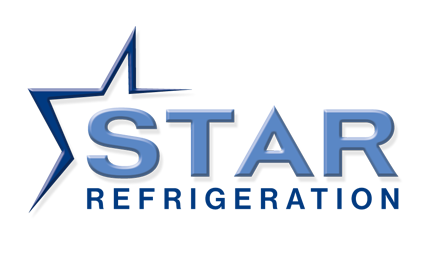Modern low carbon refrigeration systems are the key to meeting net zero goals in the cold chain

Minimising heat loads, optimising operational practices and employing the most environmentally friendly technology are the way forward for achieving Climate Change Agreement (CCA) standards.
The UK government has set itself an ambitious target of reaching net-zero carbon by 2050. Considering that the cold chain sector contributes up to 2.5% of greenhouse gases worldwide, businesses operating in the industry should take steps now to enhance their carbon profile.
Some progress has already been made in this respect – large distribution centres in the UK are currently handling more product than ever before, but using 17% less energy than they were in 2008 to do so. However, there is still plenty of room for improvement as the Government report on cold chain performance against Climate Change Agreement (CCA) targets showed that about 100 of the units surveyed in 2017/2018 did not achieve the energy goals.
The CCA provides cold chain business owners with an up to 90% reduction on the Climate Change Levy (CCL) they currently pay on energy bills. However, to qualify for these savings temperature controlled storage companies must meet the government’s target of 6.67% reduction in relative energy usage by 2022 against the base year of 2018.
Modern low carbon refrigeration technology can help cold storage companies attain this goal. As well as adopting the latest in energy-saving technology and transitioning to a refrigerant with a lower global warming potential (GWP), this also encompasses a more holistic attitude to how the process is managed. This means reducing heat loads as far as can be achieved without impacting business performance and making operational protocols more efficient in order to increase margins and environmental savings.
One of the ways in which energy can be saved is through improving the infrastructure and protocols surrounding open doors. That’s because air infiltration can be responsible for up to almost a third of an organisation’s heat load, so small adjustments such as reducing door heights, accelerating transfer speeds and introducing airlocks can yield big results. This, alongside other adjustments such as thickening sandwich panels and employing LED lighting, can reduce the carbon footprint of a company in a surprisingly substantial manner.
However, the biggest driver towards a greener cold chain sector is likely to come through the adoption of low carbon refrigeration technology. This means upgrading the condensers, compressors, control systems and maintenance protocols, as well as selecting a refrigeration plant which runs on a low GWP refrigerant. For example, low charge ammonia refrigeration systems have been shown to slash the ammonia charge of a conventional systems by up to 96%, thus reducing “direct” emissions related to loss of refrigerant from the system through leakage. Ammonia is also the most efficient refrigerant known to man which means that “indirect” energy related emissions from the electricity usage are also considerably cut. Meanwhile, CO2 refrigeration solutions are also viable options for facilities with reduce capacities.
By heavily investing in R&D, Star Refrigeration developed a new approach to traditional cooling design and manufacturing challenges which focused on minimising energy consumption and carbon emissions. This resulted in the development of a range of pre-engineered low charge ammonia and CO2 refrigeration technology which has been proven to significantly exceed the minimum energy performance standards set by the Ecodesign for Energy Related Products Regulations as well as the UK’s ‘Best Practice’ guidelines. The AzaneChiller 2.0 and the AzaneFreezer 2.0 are both ammonia –based refrigeration systems which have been specifically designed to offer the highest energy and carbon reductions possible. For smaller applications Star’s Envi range of CO2 solutions additionally offers low capital costs.
Dr Dermot Cotter, Managing Director of Star Technical Solutions, the consultancy arm of the Star Refrigeration group of companies, said, “With climate change and environmental concerns an increasingly urgent item of the global agenda, the focus has to be placed on finding more efficient and sustainable ways to deliver cooling.
“Cold chain business owners have the ultimate responsibility for identifying and employing low carbon refrigeration technology. This means using cooling solutions that consume as little electricity, water and gas as possible, while simultaneously using a refrigerant with the lowest global warming potential (GWP) that does not negatively impact efficiency.”
“The use of energy-efficient technology, alongside enhanced protocols and operational adjustments, can help temperature controlled storage and distribution companies pull in the right direction towards meeting CCA targets and a greener future”.

